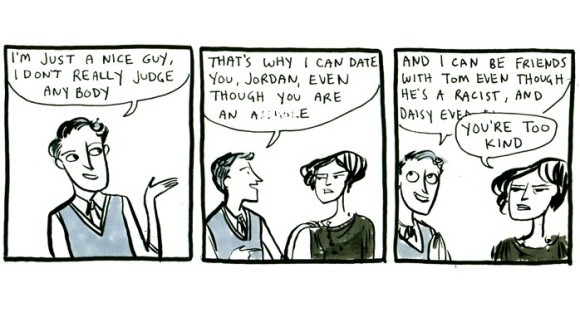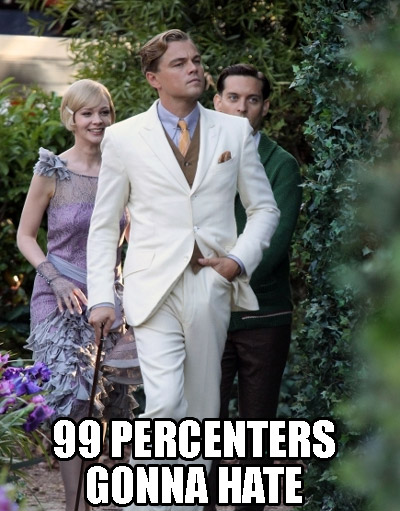In Our Mother Saint Paul, Beverly Roberts Gaventa explores the metaphors of Paul’s oft-neglected maternal imagery and examines his letters within an apocalyptic context. In Part 1, maternal imagery is examined to show that Paul is “an authority who does not conform to standard norms of authority.” Part 2 explores the Pauline letters with questions of apocalyptic theology at the forefront.
Gaventa recognizes that maternal images are complex metaphorical movements that are too often dismissed. Paternal imagery is of one-time begetting and is not the same category as maternal imagery, which reflects an on-going nurturing relationship. As such, it describes the vocation of the apostolic office and is associated with apocalyptic contexts. As aids in explaining the maternal imagery, Gaventa utilizes the history of traditions; the sociocultural context in which the letters were written, especially gender construction within the Greco-Roman world; and ‘metaphor theory’, which Gaventa explains as the use of metaphor as “an invitation to intimacy” and to change our minds.
Specifically, Gaventa is interested in the cohesion of Paul’s use of familial and kinship metaphors, noting that “metaphors having to do with nurture are almost exclusively associated with mothers” and generative metaphors that “may structure large aspects of thought.” The imagery has implications for Paul’s understanding of both leadership and women’s roles.
The first four chapters address specific maternal images employed in Paul’s letters, beginning with that of apostles as infants and nurses (1 Thessalonians 2:7), a mixed metaphor Gaventa explains through the social context. With this image, Paul is struggling to identify two aspects of the apostolic role: childlike in that he does not seek benefit, and nurse-like in that he is responsible in tending his charges with care and affection. Such metaphors of family life establish believers as a family, which restructures society and reconceptualizes conventional roles. The apostolic task is not ordinary, and “one must employ categories that seem outrageous.”
Next, Gaventa addresses the image of Paul in labor with the Galatians in his womb and the object of labor being Christ (Galatians 4:19). The metaphor may seem confused, but Gaventa shows it to be intentional. Through examining the Greek, Gaventa understands the verse to be about the apostolic vocation’s association with the anguish of the coming apocalyptic era, and the goal of anguish is that Christ be formed within communities. Paul’s work as an apostle occurs within apocalyptic framework that looks toward the incorporation of the entire cosmos into Christ. This is not about the action of Paul to another individual, but the action of God toward humanity.
The third image examined is Paul as nurse supplying milk to ‘infant’ believers not ready for solid food (1 Corinthians 3:1-3). The metaphor here reinforces familial language within the community of believers while also undermining culturally approved masculine roles. Whereas other commentators focus on paternal imagery later in the passage and even try to link this image with it, a nursing mother cannot be replaced with a father. She examines the Greco-Roman cultural understanding of sexuality—in which women were understood to be inverted males, femininity was a threat to masculinity, and strict norms for ‘real men’ were followed—to conclude that Paul “effectively concedes the culturally predisposed battle for his masculinity” and moves to the margins of acceptability. Gaventa compares Paul’s loss of status to his later images as a planter of someone else’s field, a servant of someone else’s builder, and also to “the crucified Jesus, who is no more a ‘real man’ by the world’s standards than is a nursing Paul.”
The final piece of maternal imagery addressed is of creation itself in labor (Romans 8:22). Gaventa argues that “all creation” includes humanity, even non-Jew and non-Christian. The labor of creation births nothing, but rather waits for God’s action. Meanwhile, creation continues to be sold into slavery, although the resurrection means that the powers, ultimately, will not prevail. What Paul affirms is the future redemption of creation despite the fact that “anti-God powers” of Sin and Death continue to separate humanity from God.
Chapter Five transitions from specific metaphors into the overall theology of Paul. Questions of permission and prohibition are not Paul’s priority of vocation. Gaventa focuses on Galatians in order to see what might be gleaned from a letter that is decidedly male in its issues, characters, and decision-making. When the question is no longer primarily about Paul’s understanding of women, the letter is liberated to speak to theological concerns that affect all humanity. The reader is free to hear the ways in which the gospel’s arrival obliterates law, systems that measure achievements, and identity constructions that separate rather than connect, such as culture, religion, socioeconomic status, and gender.
In Part Two, Gaventa places the maternal metaphors into the apocalyptic nature of Paul’s theology. Through examining, primarily, Paul’s letters to the Galatians and Romans, she reveals Paul’s theology to emphasize (a) the presence of the ongoing apocalypse that invades all realms of life and (b) the gospel that God revealed victory in the ongoing struggle between good and evil through the crucifixion and resurrection of Jesus Christ.
In Galatians 1 through 4, Paul focuses on the singularity of the gospel and on the relationship of believers to the gospel. He sees Galatians as seeking to please outsiders in the same way he had done previously, and instructs that they must not submit to the elements of the world. What rules the text is the conviction “there is only one gospel and that it puts an end to all prior commitments, conventions, and value systems. [Tradition, law, social barriers, and feast days] are alike insofar as they threaten to undermine the exclusive claim of the gospel.” Paul uses his own experience as an example of the gospel’s work and power, using his life to point to something beyond himself. Although the presenting problem of circumcision in Galatians 3 and 4 is a question concerning the law, Gaventa looks past the symptom to the central theological issue of the identity and accomplishments of Jesus Christ. “What the Galatians seek in the law is the certainty that they have a firm place in the church of God and that they know what God requires of them. It is precisely this certainty, and every other form of certainty, that Paul rejects with his claim about the exclusivity and singularity of Jesus Christ.” Paul’s Christology puts the crucifixion at the focus, through which humanity is freed not only from legal practices but from all identifications, whether within law or outside it. The new creation brought about by the crucifixion allows for no augmentation by the law nor any other power or loyalty.
The final chapters of Our Mother Saint Paul investigate Paul’s letter to the Romans to understand the cosmic battle between God and the anti-God powers as well as the community of believers. Gaventa examines the phrase “God handed them over” with the understanding that God surrendered humanity to the anti-God powers, specifically to uncleanness/impurity, dishonorable passions, and deformed mind. In Paul’s understanding, these are not human characteristics but powers; humans always live in the grasp of some power. Having already handed over humanity, the crucifixion is the point at which God hands over his own Son, which is not the victory of the powers but their unmasking and sure defeat.
Paul’s letter to the Romans emphasizes that the battle against evil is not simply a list of transgressions to condemn or avoid, it is God’s own enemy. Sin is not confined to behavior but is a power that entered the world, became an enslaving force, unleashed its partner Death, and corrupts even God’s law. As God once handed humanity over to Sin, he has handed over Jesus for its defeat. Baptism means the individual is dead to Sin, although capable of transgression (lowercase sin). On a cosmic level Sin is no longer the enslaving power; grace holds dominion. Ultimately, God will destroy evil on behalf of humanity.
Gaventa also considers Romans to see what it might suggest about community. She observes that Paul invokes a common memory of what has happened in the gospel with the hope that a shared interpretation will shape the future and unity of the community. The community’s behavior is characterized by an upbuilding of others within the community and reaching out to the outsider. Community boundaries are wide and yet distinguish a “line between those who are living and those who remain in the power of Death.” However, Paul does not stigmatize outsiders; he is caringly concerned for them.
Gaventa shows Romans to be a display of Paul’s theologizing. His theology is not a starting point but an end product that is fluid in light of changing events. God, for Paul, is ‘on the loose’ and uncontainable. The demands of such an all-encompassing God affect every area of human life and creation itself. Paul maintains that God is faithful, but faithfulness does not imply predictability. What may look like rejection to Israel is not unfaithfulness but is faithfulness to all creation, as God works to transform all. Paul’s fluid understanding allows room for a God who unexpectedly surpasses his promises.
Reviewers have much to praise in Gaventa’s work. McNeel writes that Gaventa shows maternal images to be “an essential part of Paul’s theologizing, both about apostolic ministry and about the cosmic battle going on between God and the anti-God forces of the universe.” The common critique is the fragmented argument of the work as a whole, especially between the two parts. Ascough relates that in early chapters the reader is left “wondering how the term ‘apocalyptic’ is being used.” The chapters on apocalyptic theology, McNeel notes, apparently “were not composed with maternal imagery in mind.”
While I agree that the book reads as two distinct works, her war-faring language is more problematic for me. Gaventa employs war imagery to describe conflict between powers. She states that “God wages war”, and that believers are God’s weapons. However, she also describes a God who “delivered up humanity”; the weapons (humanity) have been handed over. I protest: This God does not battle, he surrenders and dies on a cross. This God does not crush opponents, but becomes vulnerable to them. Feminists recognize the way language shapes cultural structures, and war-faring language is no exception. By employing primarily war imagery in theology and depicting a battle-ready God, Gaventa perpetuates philosophies of righteous war and systems of violence.
This review written for Feminist Hermeneutics with Jo-Ann Badley; all students were asked to write a review of this text.










